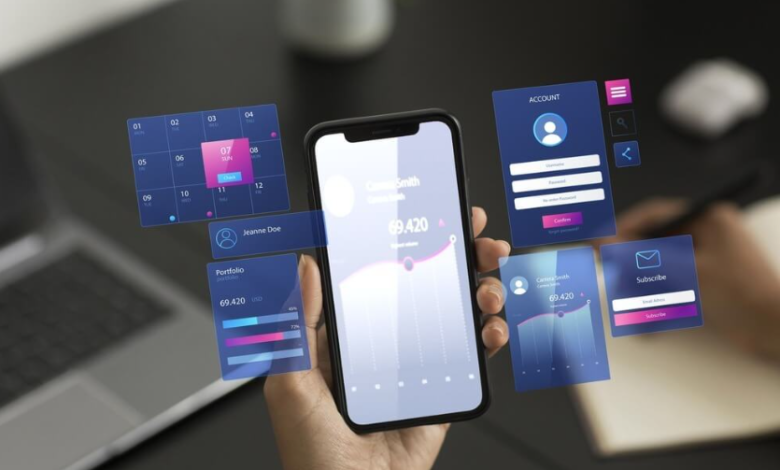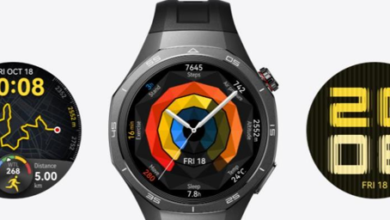App Store Optimization (ASO) In 2025: New Rules for Ranking

With an estimated 5 million apps existing on Google Play and Apple App Store, visibility of an app has certainly become the core criteria and a deciding factor between digital obscurity and rapid growth. App store optimization (ASO) is no longer an option – it has become an unavoidable necessity to survive in the ever-growing mobile app market.
With 2025 unfolding, the ASO landscape is growing – shaped by the shifts in user behavior, AI algorithms and platform-level updates. If you’re curious to learn about the new rules of app store optimization and master the art of ranking your app in 2025, this article offers an incredible insight.
Whether you’re planning to build an app yourself or investing into a leading mobile app development company in Austin, it is important to understand the latest updates and key trends to stay on top. Let’s dive in to learn how you can tailor-build an app that can successfully navigate through the latest privacy policies, algorithm preferences and user expectations.
ASO is Now AI-Powered – And That Changes Everything
Both Apple and Google have incorporated advanced AI into their app store ranking algorithms. These systems can now assess and rank apps on the basis of contextual behavior, dynamic user intent modeling, and interaction history.
What Has Changed?
- AI is intelligent enough to determine irrelevant or forced stuffing of keywords, making it an obsolete practice and can also lead towards ranking penalties.
- User behavior has become the core criteria and the apps are ranking higher when they’re able to deliver the exact way users expect at each scroll or click. Session time, retention, and uninstall rates are the crucial factors when it comes to deciding ranks.
- With advanced natural language processing (NLP), app descriptions are now scanned for semantic relevance and context, not just some specific keywords.
Pro Tip – the title, subtitle and description of your mobile apps shall all include meaningful, intent-driven content without any robotic integration of keywords. Write like you’re solving the real-life problems of your users.
See also: Green Construction Techniques: Building for a Sustainable Future
Visual Assets Are Now Performance-Based
The app previews, screenshots, and icons you add are not just about the aesthetics, they are now proactively tracked and monitored for engagement. The app stores measure how many users click or scroll through the tutorials, watch your previews and then align that with your installs.
What Is New In 2025?
If you partner with the best mobile app development company in the USA, they’ll know and thoroughly understand the following points.
- It’s almost non-negotiable to A/B test visual assets.
- With decreasing attention spans, video previews must tell a story within 15 seconds. Static screenshots can lose significance if not accompanied with adequate captions, emojis and UI.
- Dark mode screenshots have become necessary and no more an option. It is mainly because dark-themed devices have become very common.
Actionable Tip: leverage real-user data to guide your visual decisions. Try highlighting the core features of your app in screenshots along with real use case scenarios and strong visual cues.
First 72 Hours Post-Launch Are Make or Break – In 2025, the app stores decide your ranking within the first 72 hours post launch. The core criteria on which your score depends include –
- Retention rate
- Download velocity
- Crash reports
- User ratings
It is like a test-run period. If your app performs the right way during this phase, it is rewarded with an algorithmic push or momentum or else the ranking might suffer.
Ratings and Reviews Are Hyper Prioritized
While a steady flow of positive reviews was enough back in time, updates in 2025 have made the process complex. Now the recency and relevancy of reviews matter, the depth of written feedback also matters, and engagement with negative reviews has also become a crucial factor.
App stores now reward apps on the basis of their engagement with user reviews, how do they respond to positive and negative comments. It showcases the developer actively going through the user feedback and iterating the app accordingly.
App Store Localization Has Become Hyper-Specific
The app stores in 2025 are utilizing regional behavioral analytics to make sure the users are showcased with the most relevant options in every niche and market. This means, it is not enough to just translate the metadata of your app. Instead, you should tailor visuals, keywords, and descriptions in alignment with regional behavior, dialects, and culture to capture potential audiences in each of your targeted regions.
For example, app store optimization for English in the UK will be completely different from that in Australia or US despite the fact that the language is technically the same.
Keyword Strategy Is Now Conversational
One-word keywords like ‘budget’ or ‘fitness’ have become obsolete. According to the latest updates, the app store algorithms favor long-term, conversational key phrases that reflect user intent and search behavior. For example, guided medication apps for beginners, best budget tracker for freelancers, etc.
Using these keywords in your app’s title, subtitle and description can reduce competition and maximize conversions by capturing the specific user intent.
Privacy Practices Now Affect Rankings
With an increasing scrutiny on data privacy, both Google and Apple stores are now ranking apps in part on the basis of ethical data practices and transparency. Apps that can:
- Collect minimal user data
- Utilize secure data protocols
- Offer detailed disclosures on privacy
…are given priority in search and browsing results.
Retention is the New Download Metric
In 2025, downloads without engagement are meaningless. The new benchmark is Day 1, Day 7, and Day 30 retention rates. High churn leads to de-ranking, even if your app gets a large number of installs.
Actionable Tip: Invest in onboarding. Create a flow that teaches users how to use your app and helps them see value within the first session. Use gamification, rewards, or milestone reminders to boost retention.
Social Signals Now Influence ASO
Apple and Google now tap into external engagement signals—especially from social media platforms. Mentions, shares, and branded hashtags that are connected to deep links or app features can increase discoverability.
Actionable Tip: Encourage users to share their in-app achievements or experiences on social media. Integrate shareable moments within your app’s UX.
Store Algorithm Transparency Is Decreasing
Despite all these insights, app stores in 2025 are becoming more opaque. Algorithm updates are more frequent, and ranking shifts can happen overnight without explanation. Therefore, ASO is no longer a “set and forget” task—it’s an ongoing process.
Actionable Tip: Monitor KPIs weekly. Run small experiments regularly. Treat ASO like SEO: an evolving discipline that requires agility.
Bonus: Tools to Supercharge ASO in 2025
To keep up with the ASO game, here are some updated tools tailored for 2025:
- AppTweak – Advanced keyword suggestions powered by user intent modeling
- SensorTower – New retention tracking features added in 2025
- SplitMetrics Optimize – A/B test videos, screenshots, and icons with real-time data
- ASOMobile – Market-specific keyword tools with NLP-powered suggestions
- Storemaven – AI-driven testing for visual asset performance
Final Thoughts
ASO in 2025 is more than a checklist—it’s a living, breathing discipline that intertwines performance, design, ethics, and real user behavior. Ranking well means building an app that not only looks good but genuinely solves a problem, provides a seamless user experience, respects privacy, and keeps users coming back.
Whether you’re a solo developer or a full-fledged mobile app development company Austin or anywhere in the world, staying aligned with these evolving rules is essential for app success. Treat your ASO like a conversation with your users—intelligent, adaptive, and always evolving.




